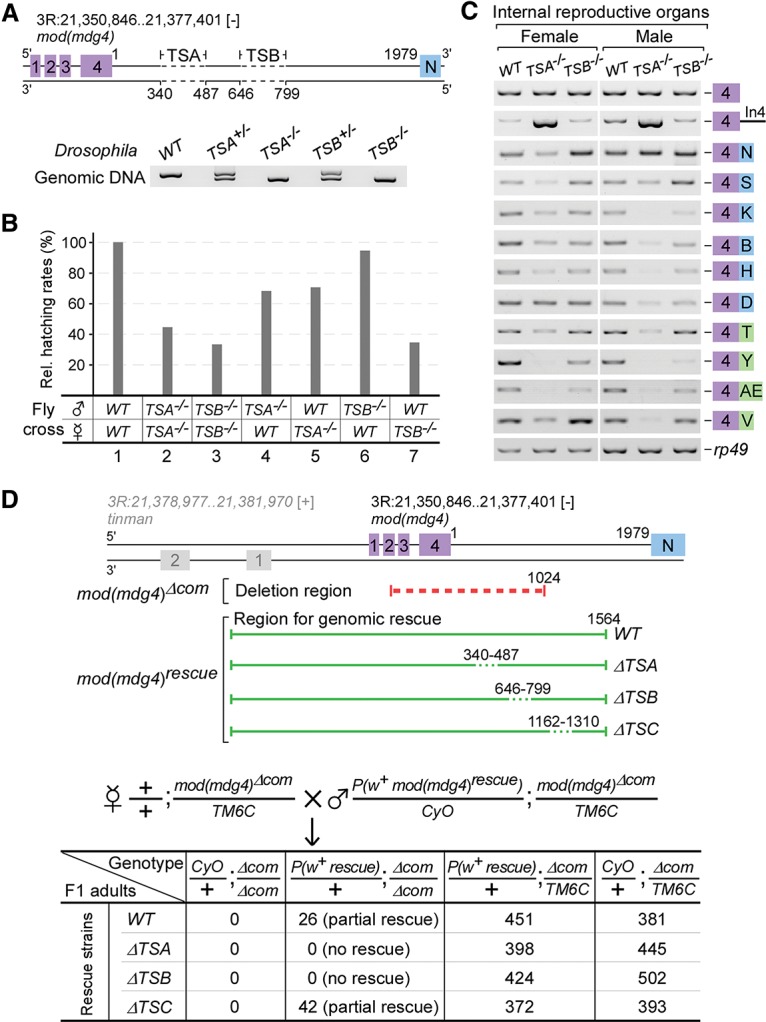Figure 4.

In vivo deletions of TSA and TSB result in development and viability defects in flies. (A) Schematic of in vivo deletions of TSA and TSB induced using the CRISPR/Cas9 system. Homozygous and heterozygous flies were confirmed by genomic PCR and sequencing. (B) Deletions of TSA and TSB result in semilethal phenotypes. Hatching rates were determined based on 300 embryos from each strain and normalized to the wild-type (WT) flies. (C) Deletion of TSA significantly decreases in vivo trans-spliced mod(mdg4) isoforms. (D) TSA and TSB are both required for the genomic rescue of lethality caused by deletion of the 5′ common region of mod(mdg4). F1 adults were counted based on their genotypes. (Red dashed lines) Deleted common region; (green lines) regions for genomic rescue (in which deleted elements are indicated by green dashed lines).
